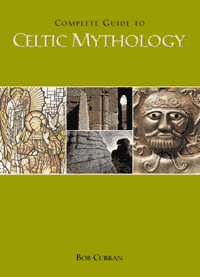
IN SEARCH OF ANCIENT IRISH HEROES - part 1 of 5
By all the evidence, the Celts enjoyed fighting. Classical writers such as Polybius and Strabo, refer to their fearsome reputation as warriors. They were so ferocious that even the mighty Roman Empire was wary of engaging them until 225 bc, when the myth of their invincibility was exploded at Cape Telamon. The ancient mythological cycles speak of individual feats of valour, military skill and magical and splendid weapons that were used to great effect. Some writers describe elite warrior cults for whom fighting and battle was a distinct way of life with warrior-schools that trained young men to be great fighters with a love of conflict. Descriptions of Celtic feasts contain accounts of contests of strength and ‘mock battles’, some of which appear to have been frightening in their intensity. An air of competition existing within the fragmented society of the Celtic world came to the fore during such gatherings. It was a mark of honour for a tribe to boast the best warrior in the region and he was usually accorded special status.
Folk tales and legends tell of many heroes and mighty warriors who might not have enjoyed much existence outside the imaginations of bards and storytellers. Some might be the human representations of ancient war gods; others might be the fusion of lesser warriors, into a central character who then became, through the years, a quasi-historical figure. One such figure might have been the greatest of all British heroes, King Arthur. But this exaggeration and combination of attributes is characteristic of most of the great heroes of Celtic myth. The roots of the warrior-hero stretch back to the very dawn of Celtic society and beyond.
Early War-Gods and Warriors
Warrior deities in Western Europe originated in prehistoric times, before the arrival of the Celts. Bronze Age people worshipped some form of fighting or war-god as exemplified by carvings on menhirs or standing stones like those at Puech-Real in France. Such stones were clearly venerated and were probably the physical embodiments of spirits of conflict, showing figures in fighting attitudes or carrying weapons.
Rock carvings such as those at Val Camonica had religious significance and show ancient types of daggers and spears. Consequently, some historians suggest that the weapons themselves might have been venerated or that the warrior was considered merely an extension of a specially powerful or enchanted armament. This has some significance to Arthur’s famous sword, Excalibur. Similar weapons are associated with other legendary and historical figures.
William Millaton of Pengersick Castle in Breage, Cornwall, during the reign of Henry VIII, was said to have a magic sword – given to him by a ‘foreign princess’ – which ensured victory for its user in battle (see: Robert Hunt ‘Popular Romances in the West of England’).
Carvings in northern Italy, an important early Celtic area, and parts of Scandinavia, where some Celtic-style peoples had settled, show pitched battles between groups of warriors carrying mighty and potent weaponry. Italian carvings are believed to date from the second or third millennium bc and are certainly Celtic or pre-Celtic. As Gelling and Davidson have suggested, this depiction shows delight in and respect for the weaponry that is used (see: P. Gelling and H.E. Davidson: ‘The Chariot of the Sun’, Dent 1969).
Just as stones and trees became physical embodiments of the natural forces lurking in the landscape, so the warrior became the embodiment of the power that resided in his own weapon. The armament itself gave him his potency in battle. The worship of weapons was reflected in the burial of weapons in certain areas and was distinct from the aquatic rituals that formed part of the worship of river-deities.
In places such as South Cadbury in England, the burial of weaponry appears to have been quite common. Here, at a small, enclosed shrine, weapons were separated from animal sacrifice conducted there and placed in another grouping for burial. Caesar mentions that, among the Celts, weapons that had been captured in battle, even if broken or damaged, were placed in distinct heaps as an offering to the gods of the victors.
Armour and protective dress were just as venerated as weapons, hence offerings of body armour and decorative war-harnesses left at such river sites as the Severn and the Thames in England. Many of these might have been talismans, used magically to protect the warrior in the heat of battle.
This Chapter extract continues with In Search of Ancient Irish Heroes - Part 2>>>.
From Complete Guide to Celtic Mythology by Bob Curran

|
|





